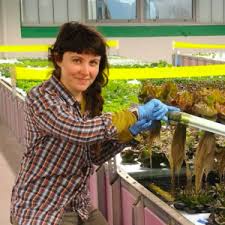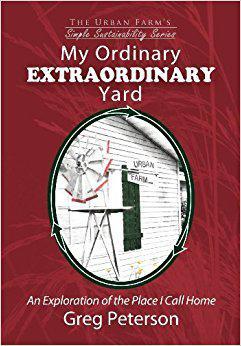Aquaponics: The Gateway from STEAM Learning into the Workforce
by Guest blogger: Jill Shea
Farm Manager of Trifecta Ecosystems
Listen to her podcast HERE
I recently had the privilege of joining the Urban Farm U Podcast where I spoke to my experiences as a woman in the aquaponic farming industry. As part of my mission to get more young girls engaged in science and specifically aquaponics, I wanted to share some of my insights into how STEAM learning can help young people connect to the job force.
Aquaponic Farming is S.T.E.A.M. learning in action. A trend for more engaged, relevant curriculum like S.T.E.A.M. can become more than the latest nifty learning method by connecting young people to lucrative career channels that apply those skills first-hand. Aquaponic farming is that career channel.

I sometimes forget that not everyone is familiar, so I’ll provide a brief synopsis of Aquaponics and break down how each element of S.T.E.A.M. directly correlates to the principles of aquaponic farming.
Aquaponics and STEAM
On a relatively basic level, aquaponics is the process of growing fish and plants together in one ecosystem. Through filtration and beneficial bacteria, fish waste converts to usable nutrients for plant uptake and plants help filter water for fish. It’s sustainable, it’s an ecosystem in action, it’s food security in any old warehouse, classroom or backyard, and let’s be real- it’s awesome.
It’s also Science: monitoring water quality on a regular basis, making sure it’s in a suitable range for optimal plant and fish growing conditions.
It’s Technology: the opportunities in agtech are limitless. From ideal lighting types, settings, and variables, to areas of automation like crop diagnosis, harvest readiness and system maintenance.
Aquaponics is also Engineering: System design is one of the most sought after solutions in Aquaponics. Several hobbyists and commercial growers are still aiming to find the perfect set-up for optimal growth.
Arts are the secret sauce where many might not see the direct correlation, but for an emerging growing method, it’s all about the marketing and style with which it is showcased. One of the goals for Aquapioneers is to create tools with a user-friendly interface that is also enjoyable to look at for farmers old and new.
Never in a million years did I imagine I would be using Math in my career, but farming is all math. From crop planning to harvest yields and fish feed, it is used in every aspect of farm planning and engineering.
I hope this article will spark the first thoughts of creative opportunities for young people looking to apply their STEAM learning skills in the workforce.
Thanks to Urban Farm U for the opportunity to share.
UrbanFarm.org/steamaquaponics
About this author:

Jill Shea
Jill’s farming story started in Orlando, Florida in exchange for free herbalism classes. Since 2006 she has been fortunate enough to both tend land and teach a variety of growing styles all over the US. She considers it a pleasure to now farm for Trifecta Ecosystems where they help cities feed themselves through aquaponic growing innovation.
How to reach Jill:
Websites: trifectaecosystems.com and citythatfeedsitself.com
Instagram: @Farmer_JillS
*Disclosure:
Some of the links in our podcast show notes and blog posts are affiliate links and if you go through them to make a purchase, we will earn a nominal commission at no cost to you. We offer links to items recommended by our podcast guests and guest writers as a service to our audience and these items are not selected because of the commission we receive from your purchases. We know the decision is yours, and whether you decide to buy something is completely up to you.


